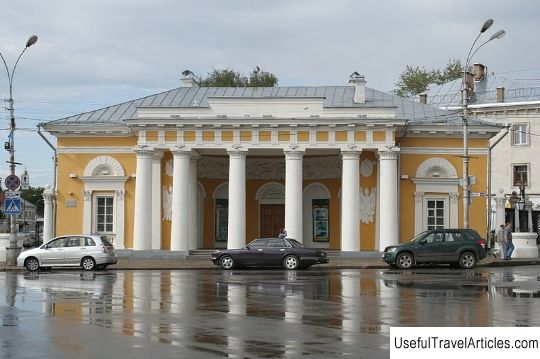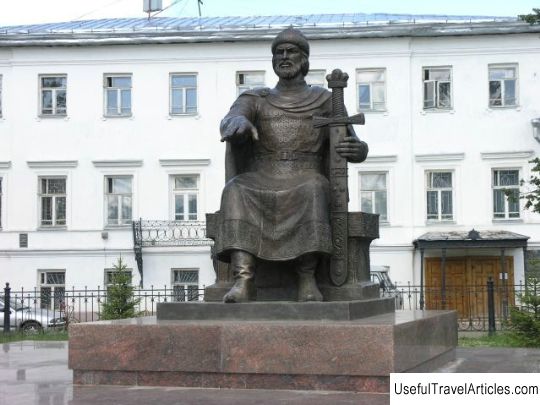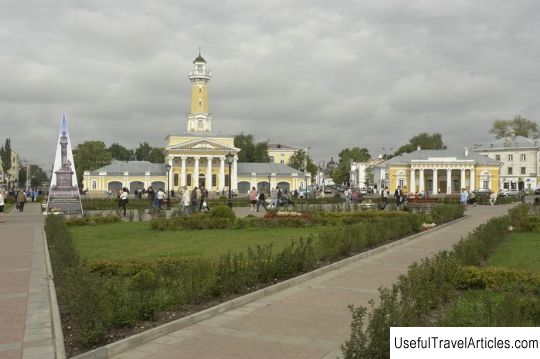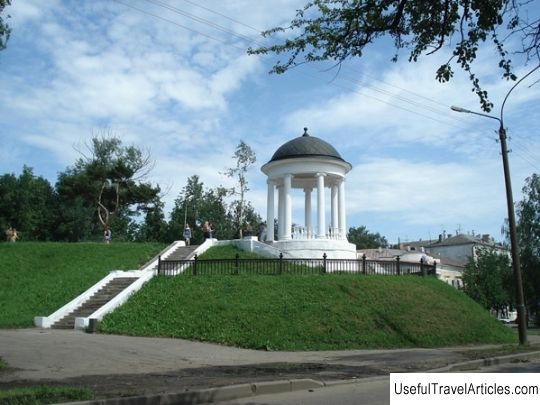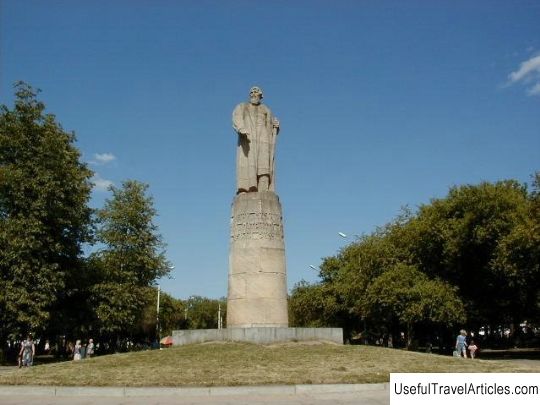Obelisk of the Moscow Outpost description and photo - Russia - Golden Ring: Kostroma
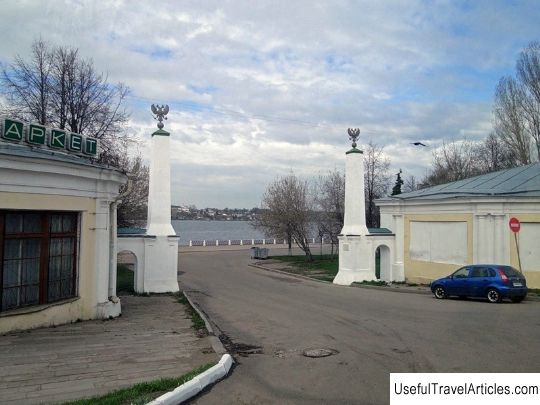
Obelisk of the Moscow Outpost description and photos - Russia - Golden Ring: Kostroma. Detailed information about the attraction. Description, photos and a map showing the nearest significant objects. Photo and descriptionThe obelisk of the Moscow Outpost is located in Kostroma on May 1 street, on the Volga embankment. He kind of greets all the guests of the city arriving along the river. The entrance to the city received its ceremonial appearance in 1823, when Kostroma was awaiting the arrival of Emperor Alexander I. The project of the obelisk was developed by the Kostroma architect P.I. Fursov, then a young graduate of the Academy of Arts. The obelisk project was his first work. Later, the Fursovs built many Kostroma buildings. The architect tried to arrange the entrance to the city as ceremoniously and ceremoniously. The complex of buildings of the Moscow Outpost includes two quadrangular obelisks, which are crowned with balls and two-headed gilded eagles. Low walls with arched niches are attached to the obelisks. On the northwest side of one of the walls adjoined the kuren of the Strigalev merchants, which is mentioned in documents dated 1810 (in other sources - Tretyakov's trade tent). Currently, these buildings have been rebuilt, the obelisks have survived to our time in their original form. In 1912, the Moscow outpost was redesigned according to the project developed by the architect N. Gorlitsyn for the 300th anniversary of the House of Romanovs, according to which two one-story brick buildings were attached to the obelisks, like a guardhouse. In one building there were shops, in the other - the pub of the Association `` Bohemia ''. The kuren of the merchants Strigalevs, also made of bricks, was overhauled, a second floor was built on top, and its arched gallery, which looked towards the city, was laid, new openings were made in it. Today the outpost ensemble includes two obelisks (their wedding was lost, in 1993 it was recreated according to the project of L. S. Vasiliev), 9 m high, standing on both sides of the Molochnaya Gora street passage and connected by wickets with buildings in the form of a quarter of a circle, which protrude towards the city. Previously, this place was a ferry across the river. The road to Yaroslavl and Moscow began here. The complex of the Moscow Outpost decorated the front entrance to Kostroma from the Volga from the side of the old Nerekhtsky tract. It was here that merchant ships approached. At that time, the outpost played the role of a customs post. By the middle of the 17th century, the city economically became the third most important city in Moscow Russia after Moscow and Yaroslavl. Kostroma merchants then traded with both the West and the East. At this time, a large shopping center appeared here with flour, meat, kalash, iron, icon, fur coat, salt trade rows. A wide shopping street called Molochnaya Gora sloped straight down to the Volga. On its two sides were the buildings of the grain and kvass rows. Then there were small flour rows. The obelisks of the Moscow outpost, built for the arrival of the tsar, closed the shopping areas. But time passed and the importance of the Volga, as the country's main trade artery, somewhat diminished. The Moscow outpost ceased to play the role of the "main city gate". Nowadays it is a decoration of the city, an architectural monument of the period of classicism. Passing through the outpost, you can get to the ancient street Molochnaya Gora. If you go upstairs along it, you can go to the monument to Ivan Susanin. Milky Mountain as well as the Volga embankment - the favorite places of rest of the townspeople of the guests of Kostroma, where it is pleasant to walk and enjoy the beauty of the Kostroma landscapes.     We also recommend reading Ural Geological Museum description and photos - Russia - Ural: Yekaterinburg Topic: Obelisk of the Moscow Outpost description and photo - Russia - Golden Ring: Kostroma. |
